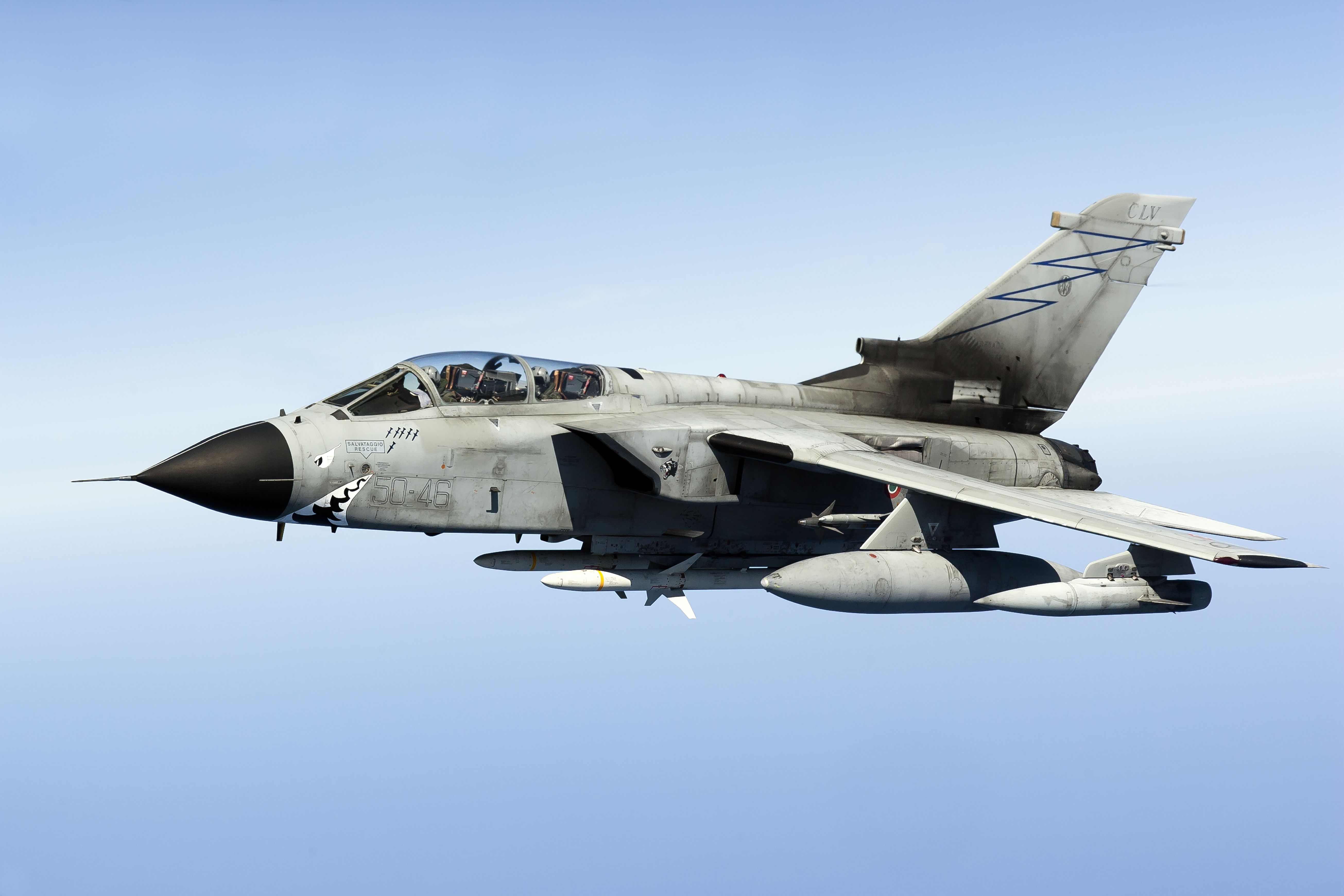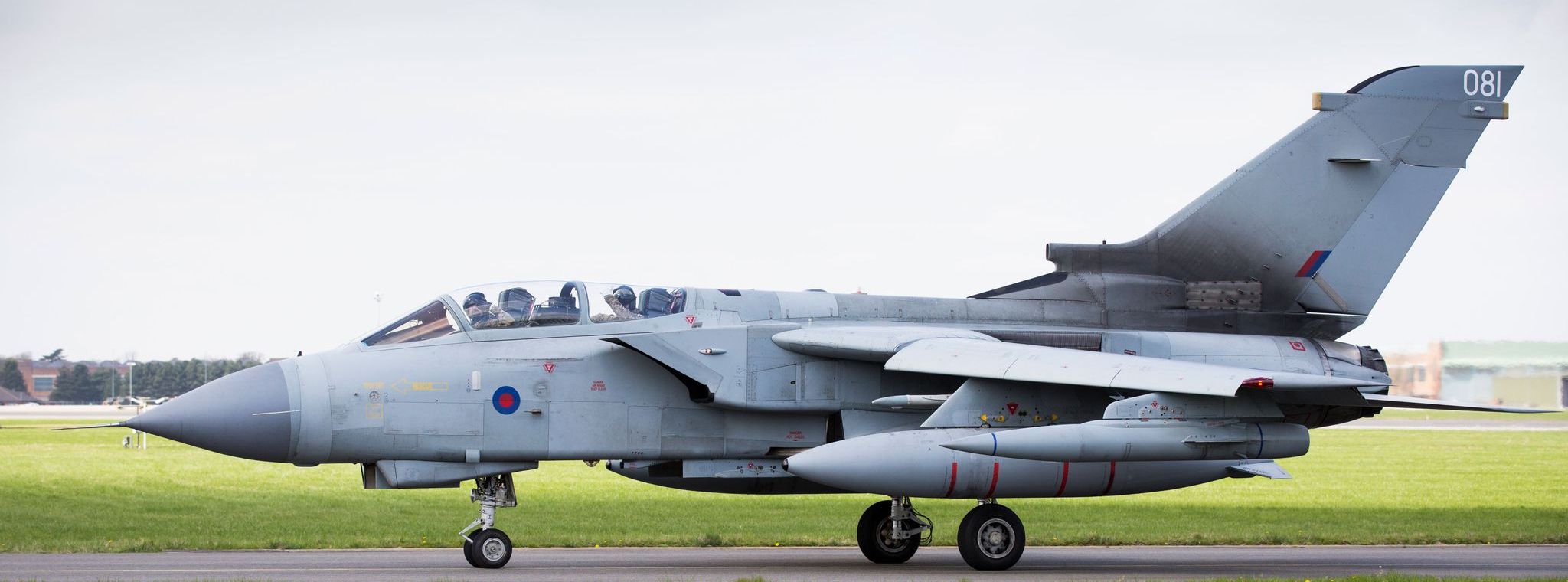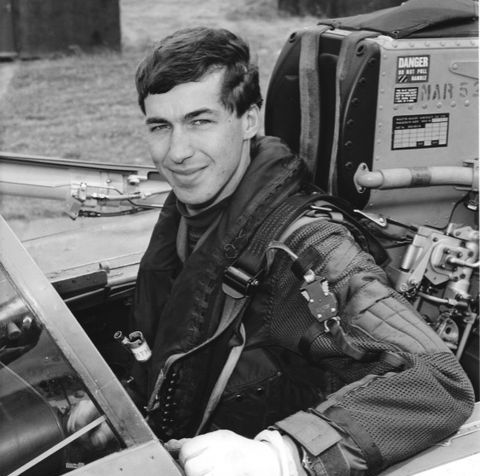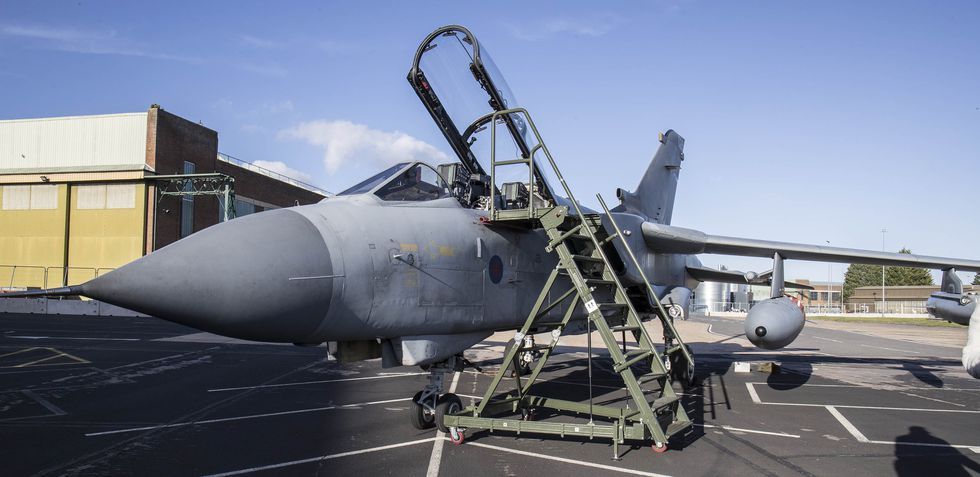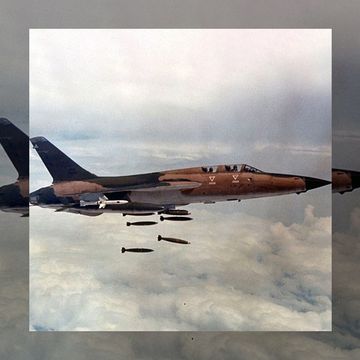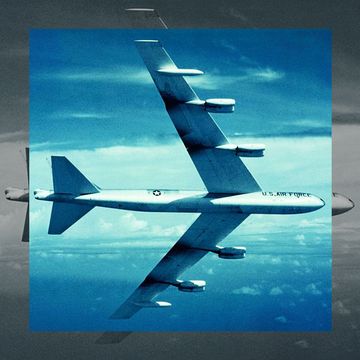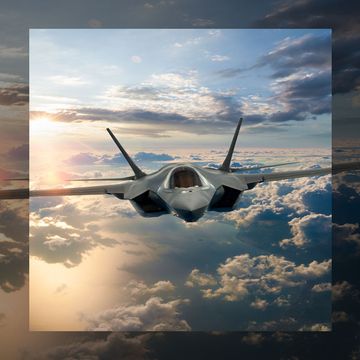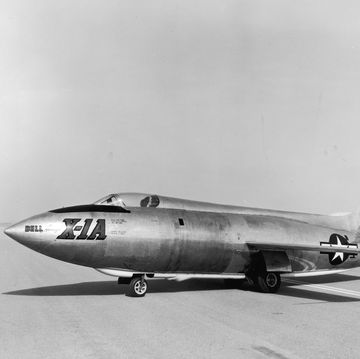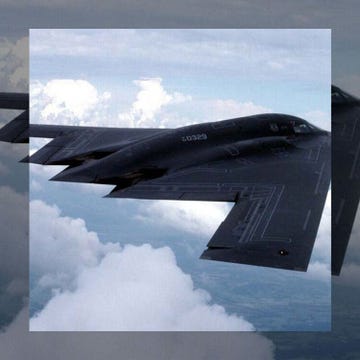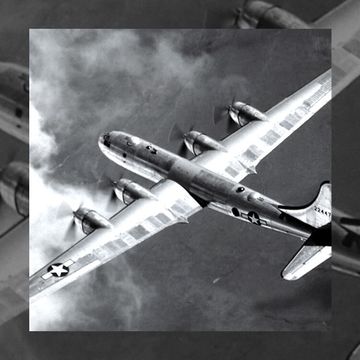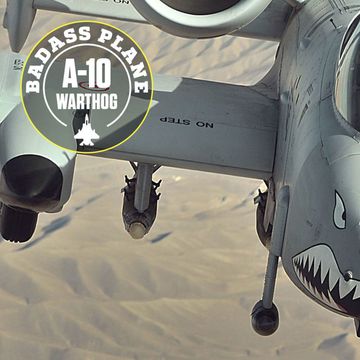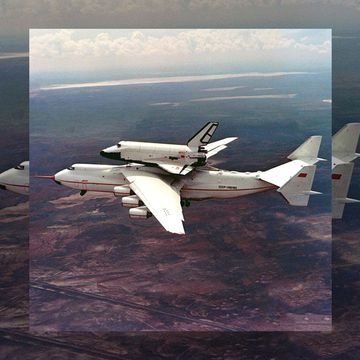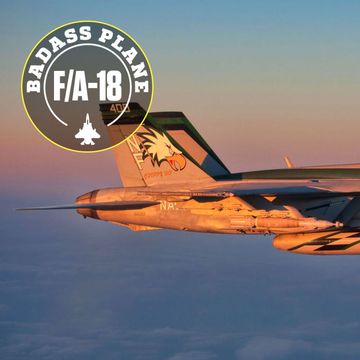It was half past eight on the first morning of Operation Desert Storm when three Tornados streaked across clear sky. The jets had just refueled high above Saudi Arabia and now sped towards their target, a gigantic airfield near Iraq’s southern border.
Navigator John Nichol and his pilot John “J.P.” Peters manned one of the aircraft. “As we closed on the target, adrenaline pumped around my body,” Nichol remembers. “Our timing was spot on. The target was identified and the aircraft weapons systems could be ordered to release the bombs. In an hour I’d be safely back at base.”
With its weapons armed, the British jet careened through a barrage of exploding fire—just the kind of low-flying attack the Tornado was built for. But at the key moment, the aircraft’s bombs didn’t release.
In an interview with the Daily Mail, Nichol said the Tornado’s targeting system itself had effectively pulled the plug on the attack because the conditions for release weren’t right. “There was chaos in the cockpit,” he said. “JP was shouting at me. The attack was a failure and, as the person in charge of the weapons systems, it was my fault.”
As the crew began a hasty retreat, an Iraqi heat-seeker hit the plane.
“One minute I was flying at 50 ft looking up at blue sky, then the jet was tumbling like a sycamore leaf and I was staring at brown sand.” What followed was one of the most infamous events of the Gulf War, with the two men forced to eject were captured by the Iraqis, tortured, and paraded to the world’s media.
Among the many watching at home was a kid called James Heeps, who’d grow up to be one of the last two Wing Commanders of a Tornado Squadron. Here in 2019, the plane is retiring from the Royal Air Force after almost 40 years. But it was those daredevil attack runs during the Gulf War, “the first CNN conflict,” that made the Tornado a legend, Heeps says."
It really became an icon of the Royal Air Force to those of my generation.”
The Spear of Europe
The 1991 Gulf War may have been the Tornado’s first taste of combat, but the U.K. plane was designed for something much darker. It was a rugged attack plane meant to survive the rigors of a potential Cold War encounter with the Soviet Union, in which Tornados could find themselves skimming the treetops of German forests at the height of a nuclear war, ready to unleash its rage onto Soviet ground targets. If the Death Star were real, the Tornado would have been the real plane Luke Skywalker would’ve flown to try to take it down.
“The Tornado’s primary design driver was to conduct low level terrain following radar nuclear strikes into the USSR,” says defense expert Bill Hodson, director at international engineering consultancy Frazer-Nash. “It provided a world-beating capability to fly in cloud, at night, at 250 ft., being undetected by enemy air defenses.”
Because of the nuclear threat, the Tornado could fly old-school if its avionics systems went down, with crews using a map and stopwatch as well as night vision goggles if the conditions required. Having a two-man crew meant the Tornado was easier to keep flying.
The first collaborative European military aircraft project, Tornado was developed by Panavia Aircraft GmbH, a company established by the three partner nations —the United Kingdom, Germany, and Italy—to create a multirole combat aircraft designed to take on the likes of the Russian MiG-29 and SU-27. Nicknamed “Tonka”, it was developed in three main variants: the IDS (Interdiction and Strike) fighter bomber, the ECR (Electronic Combat and Reconnaissance), and the ADV (Air Defense Variant) fighter.
Pilot Edward Smith had been flying the McDonnell Douglas F-4M as an air defense fighter in Germany when he was selected to retrain as a Tornado pilot in September 1982. “It had been much anticipated, heralding a new level of capability for NATO air forces.” he told Popular Mechanics. “It was expected to bring a revolution in the capability of air forces to deliver conventional and nuclear weapons against an enemy in all weather conditions, by day or night, with great accuracy.”
A High-Tech, Low-Flying Threat
The pressure was on to deliver something truly groundbreaking with the Tornado. To bring about that aerial revolution, the designers turned to a few key technologies tricks.
The first eye-catching feature was built into the wings. Much like the American F-14 Tomcat, the Tornado used what's called a "swing wing" configuration. Most aircraft, including modern birds like the F-35, have fixed wings. The Tornado, though, could transition from straight wings for more lift during takeoff to a swept-back configuration for better airflow at cruising speeds.
A formidable and lethal ground attack aircraft needs to have great vision, and so the Tornado included a navigation/attack Doppler radar kit that simultaneously scans for targets and conducts fully automated terrain-following for low-level flight.
“I remember one hair-raising moment when I suddenly became aware that the stars, which had been visible from horizon to horizon a few moments ago, were suddenly only visible in a narrow strip above me,” Heeps says. “A look down at the moving map display showed that the terrain following system was flying the aircraft down a narrow, steep-sided mountain valley. It certainly focused the mind.”
Whether you’re landing in the desert or the outskirts of a Latvian village, finding significant space to build a landing strip can be a challenge, and the Tornado had something else up its sleeve which helped deal with this problem. It features reverse thrust jet engines that gave it excellent low-speed handling and landing abilities, meaning it could stop in less than 2,500 feet.
“The Tornado has (very unusually for a fast jet) thrust reversing, provided by part of the engine tail pipes being hinged to deflect jet thrust forwards after landing,” Smith says. “This again is a very effective way of reducing landing distance.”
Danger Zone
Tornados were designed for low-level ground attack over Europe where cover from forests, hills, and could would off the pilots some protection. There was no such shelter for the 60 Tornados deployed in Desert Storm. “The Middle East is not particularly known for its extensive forests,” says Kris Hendrix, a military historian at the RAF Museum.
With many of their missions involving low-level bombing raids on air strips and Scud missiles sights, sometimes at altitudes sometimes as low as 50 feet, the air crews had no place to hide. Even a lone soldier with a Kalashnikov could pose a danger.
“Although highly successful, the Tornado suffered higher losses than the other Allied combat aircraft due to its vulnerability at low altitude,” says Hendrix.
A Nuke Plane Is No Dogfighter
Because it was designed to fight during a nuclear war with limited reliance on electronics, the Tornado was in a lot of ways a blast from the past, an analog plane in an increasingly digital age.
Its mechanical nature and the fact it rarely flew without two external fuel tanks meant some pilots found the 28-ton aircraft harder to maneuver than some of its contemporaries like the F-16 and French Mirage.
Also, despite the RAF deploying an interceptor variant designed to patrol the North Sea against Soviet bombers, it was never designed to be a dogfighter and was comparatively difficult to turn.
“[The] Tornado...was not designed to be a hard-turning fighter; pulling 5 'g' was possible, but could not be sustained for long,” says Heeps. “Instead it was meant to go far and fast at low altitude, and to be a stable platform for accurate delivery of unguided bombs when it got to its target.”
Heeps adds that the Tornado carried so much inertia that some would describe the aircraft as “heavy” or “lumbering.” But in capable hands, the Europe-made aircraft was a sight to behold. “Looking ahead and anticipating the 'racing line' through the terrain, the Tornado streaks through valleys and around hills smoothly and elegantly,” Heeps says.
Aging With Grace
Much like the smartphone in your pocket, the rapid pace of technological advancement can leave even the most impressive piece of design quickly obsolete. But despite being over four decades old and surrounded by younger, faster and sleeker models, a series of upgrades have enabled the Tornado to stay on the front lines as a formidable and valued member of Nato’s arsenal.
The RAF’s GR.4 upgrade provided the Tornado with better electronics and avionics making it supremely suited to its new found role as a guided missile carrier.
The Tornado has been the RAF’s primary fast jet asset for over a third of the service’s existence and has performed in every major conflict since its introduction, from Iraq, Kosovo, to Libya and recent operations against ISIS in Syria. More than 1,000 have been built and it will continue to fly in other air forces including that of Germany and Saudi Arabia, as of March 31 it was officially retired by the U.K, its roles being divided between the new Typhoon and Lightning.
“Many aircraft have become famous over the 100-year history of the Royal Air Force, whether through being of revolutionary design, outstanding contribution in war, or just through being loved by all who knew them, says Smith, rattling off the Harrier, the Spitfire, and the Vulcan. “But the Tornado might fit all of those categories with the best of them.”
Mark Smith is a freelance journalist who writes for the BBC, Guardian, Forbes and magazines on subjects ranging from tech and business to history and film.
